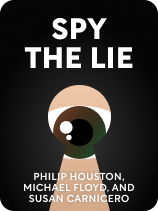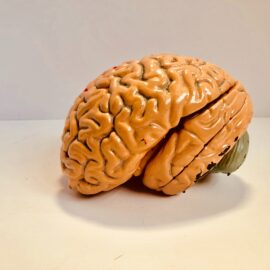

This article is an excerpt from the Shortform book guide to "Spy the Lie" by Philip Houston, Michael Floyd, and Susan Carnicero. Shortform has the world's best summaries and analyses of books you should be reading.
Like this article? Sign up for a free trial here.
What are common body language cues for lying? How can you tell if someone is telling the truth based on their behavior?
Body language cues for lying include taking long pauses before answering, anxious fidgeting, and inconsistency between speech and action. Learning these signs can help you spot a lie more effectively.
Learn more about what body language cues to look for when trying to spot deception.
Behavioral Signs of Deception
Watching body language cues for lying—things people do in response to your questions—can be very helpful when judging if someone is telling the truth. These include: pauses before answering, suspicious body language, and disconnects between speech and action. As with verbal signs, we can divide these behavioral categories into subcategories, each of which counts as one sign of deception. Let’s cover each category now.
Body Language Cue 1: Pauses Before Answering
People commonly pause before answering a question. You must decide within the context of the conversation whether a pause is “too long.”
Some questions merit a pause—for example, “Where were you a month ago?”—because most people can’t remember details off the top of their head. Meanwhile, a question like, “Did you steal that gun?” warrants an immediate answer, because no honest person would need to think about the response.
As a caveat to this, keep in mind that some people naturally take longer than others to respond.
(Shortform note: The authors’ advice on determining how long a pause “should” be is fairly general, so you must rely on your subjective judgment here. However, this may open you up to the risk of bias because people tend to assume that even a brief pause indicates deception. One study suggests that just a two-second delay before answering can make interviewees seem less honest.)
Body Language Cue 2: Suspicious Body Language
Body language often subconsciously betrays someone’s true emotions by flagging sudden increases in anxiety. The following kinds of body language reliably serve this purpose. We’ll explain each one, as well as any caveats you should keep in mind.
Shifting in place: The more pronounced the movement and the closer it occurs to your question, the more suspicious it is. It’s important to pay attention to when the movement happens: If the interviewee slides his chair forward for the first time immediately after your question, it suggests deception. On the other hand, if he slides around consistently, not as a response to your question, it may not be a sign of deception.
Throat clearing before answering, not after: Throat clearing signals both anxiety and an attempt to buy time. However, if it comes at the end of your interviewee’s response, it’s much more likely to be a natural bodily function.
Spikes in fidgeting or grooming often accompany anxiety. Examples include playing with hair, picking at fingernails, clicking a pen, clenching hands, and similar actions.
(Shortform note: Behaviors like throat-clearing and fidgeting can be signs of an underlying condition. For example, a vocal tic can cause excessive throat-clearing. Additionally, people with Attention Deficit Hyperactivity Disorder or Autistic Spectrum Disorder often fidget, and these motions can improve mental focus. In both cases, increased stress—such as the stress of being interviewed, not necessarily the stress of your question—can worsen the behavior. To get a better sense of whether to consider these behaviors suspicious, take some time to observe your interviewee before asking System questions.)
Hiding the face, especially the eyes or mouth, is a natural indication of shame or embarrassment—two emotions people commonly feel when lying.
(Shortform note: Hiding the face can have meanings other than deception, so don’t assume this sign always signals deception. For example, in Japan, it’s considered elegant for a woman to cover her mouth while laughing. More generally, blocking the eyes can signal disbelief or dissent—neither of which are inherently deceptive.)
Body Language Cue 3: Disconnects Between Speech and Action
The brain automatically matches verbal and behavioral actions to each other, and it’s difficult to act against this tendency. For example, an innocent interviewee should shake her head, not nod, when denying your accusation. On the other hand, nodding while saying, “I didn’t do it,” is a sign of deception.
This doesn’t apply to brief answers where any head motion could be punctuative, such as an emphatic nod alongside a simple, “No!” Additionally, knowing your interviewee’s background is important: In some cultures, nodding means “no” while shaking your head means “yes.”
(Shortform note: Research suggests that, rather than the brain matching actions and words, actions can happen more quickly and instinctively than deliberately chosen words. For example, if someone hears an offensive joke, they may instinctively laugh, then apologize because they feel ashamed at laughing. Further research shows that people can train themselves to avoid their instinctive actions betraying their emotions, so don’t assume that immediate actions are always honest.

———End of Preview———
Like what you just read? Read the rest of the world's best book summary and analysis of Philip Houston, Michael Floyd, and Susan Carnicero's "Spy the Lie" at Shortform.
Here's what you'll find in our full Spy the Lie summary:
- Why your brain is wired to believe others
- How you can learn to read body language like a spy
- The three traits of effective lie-detecting questions






